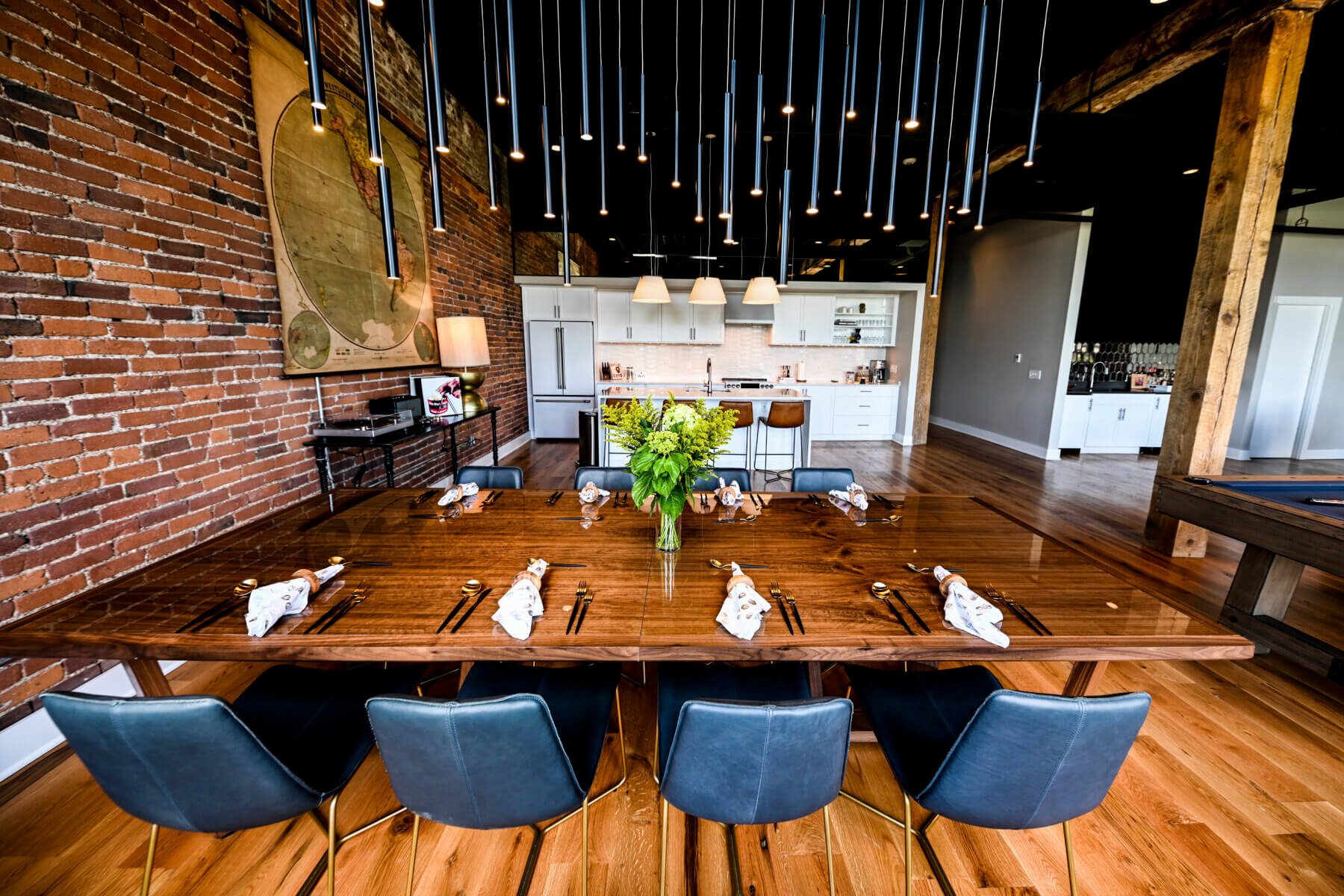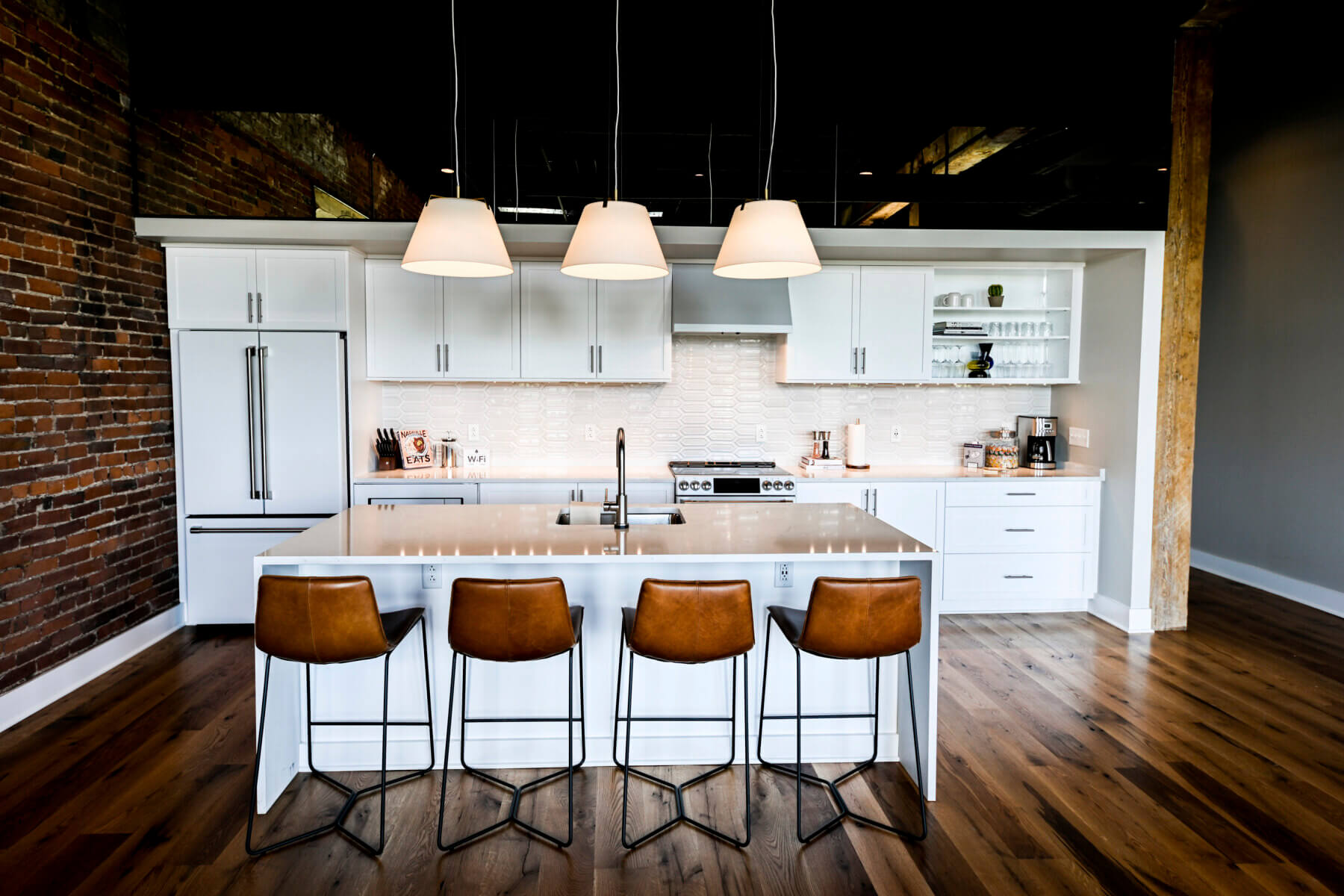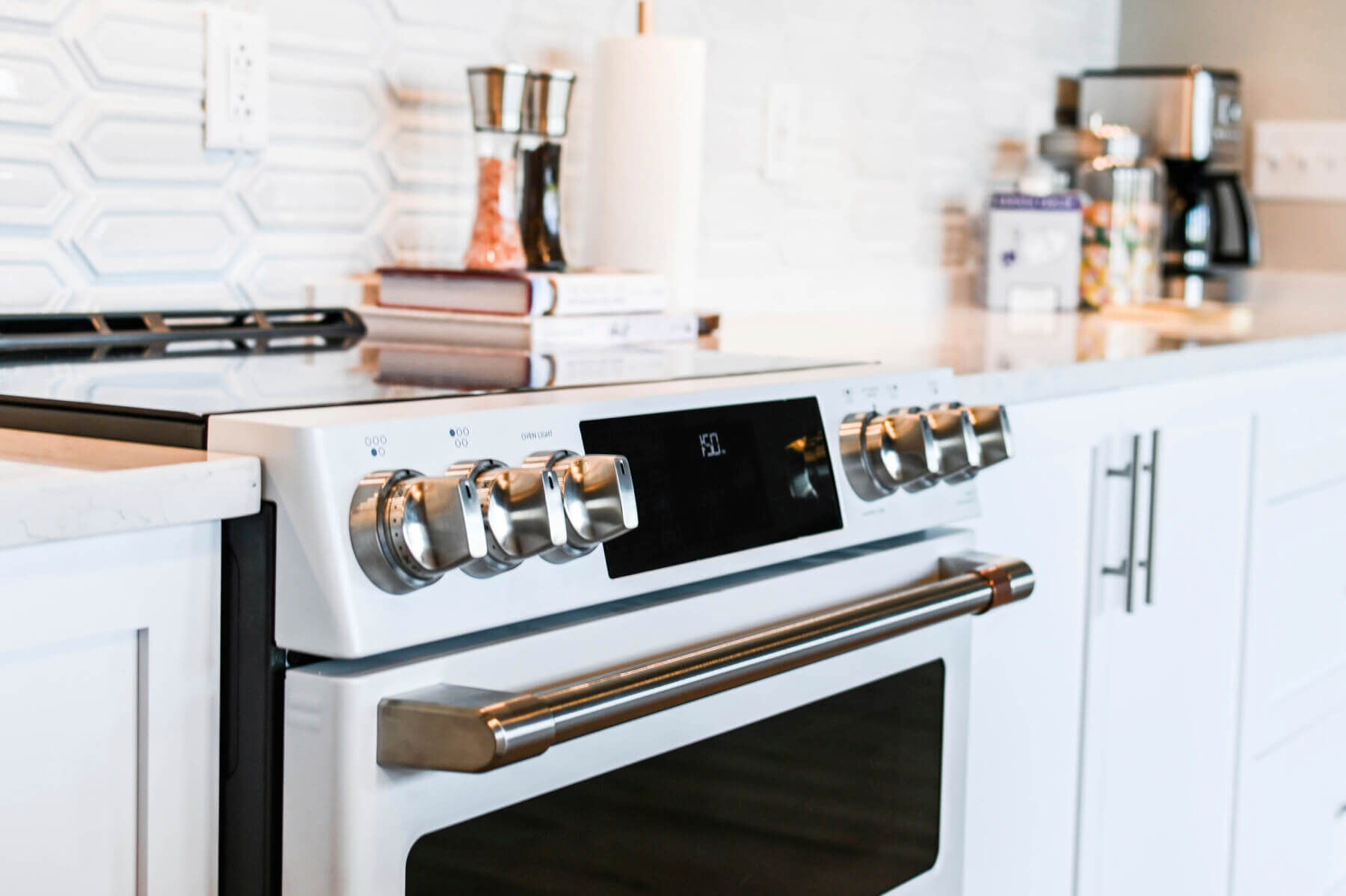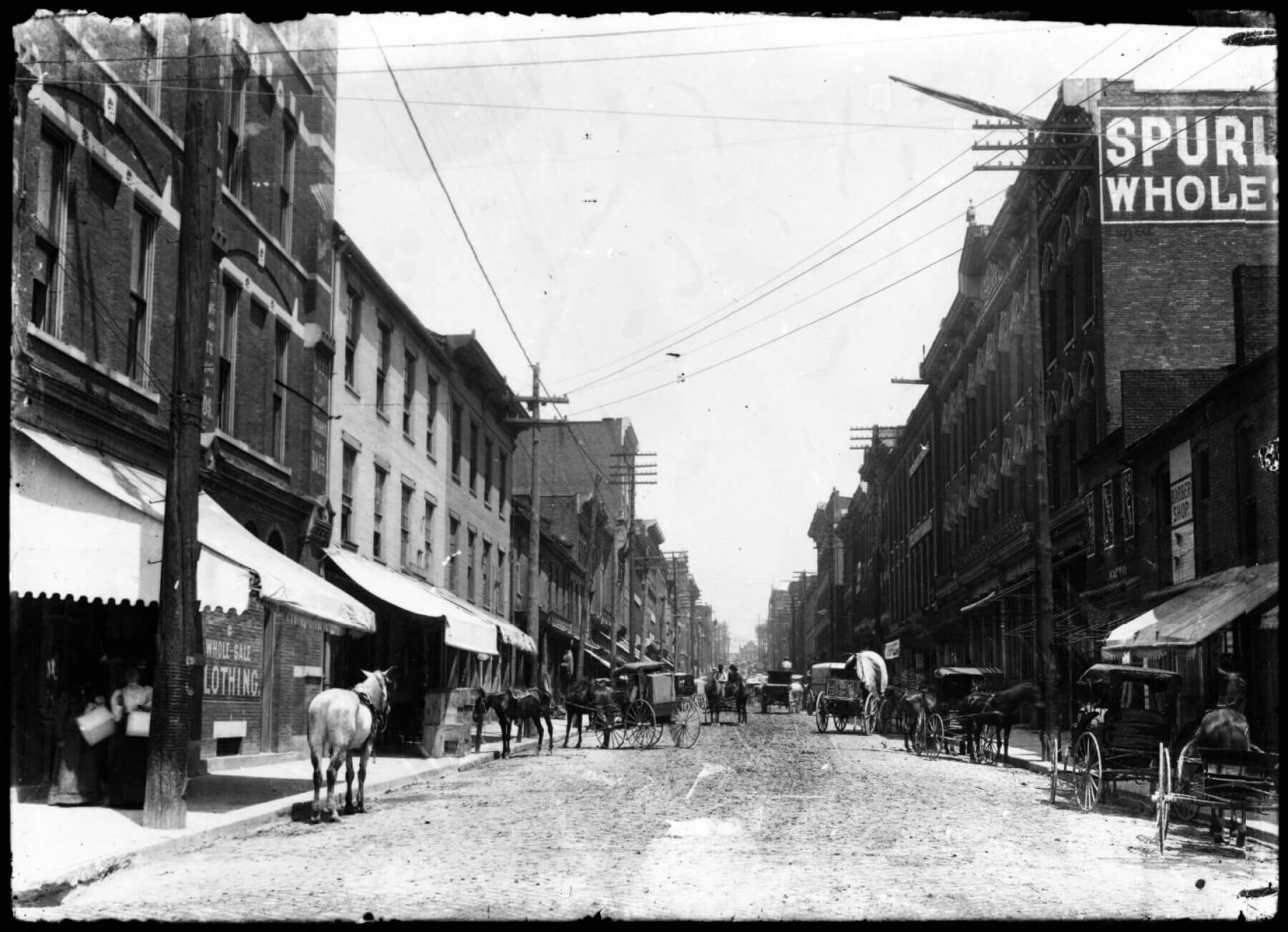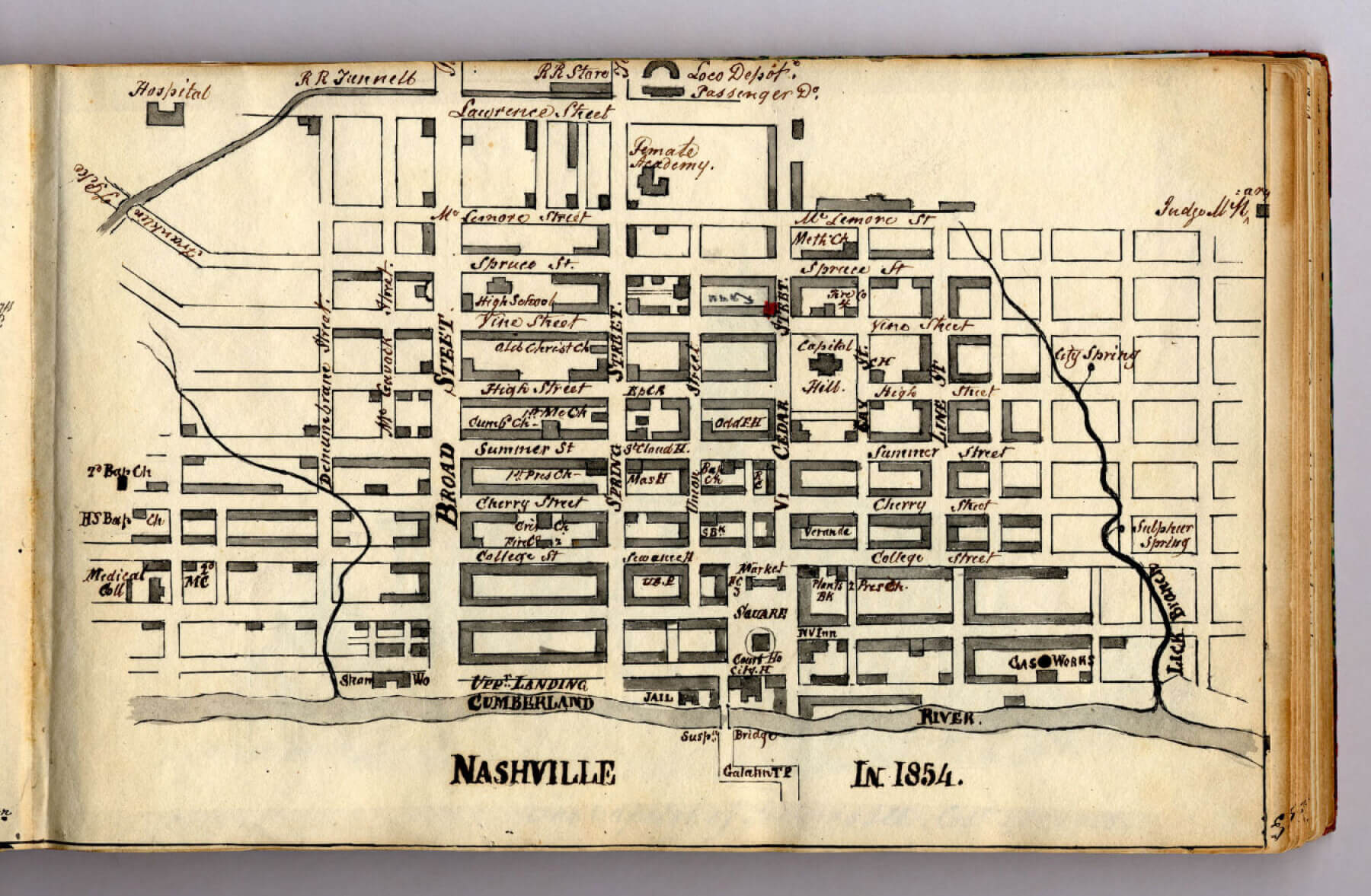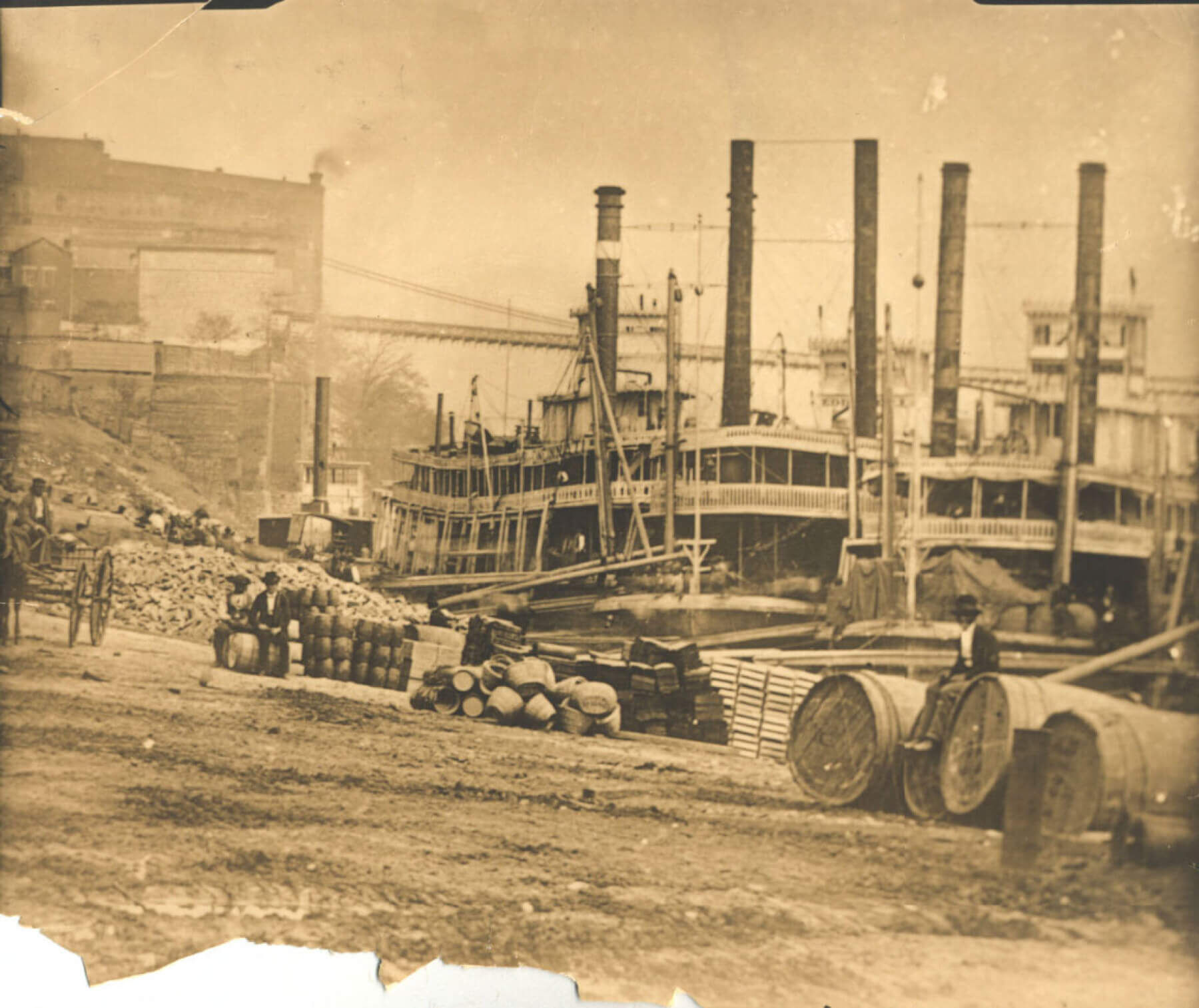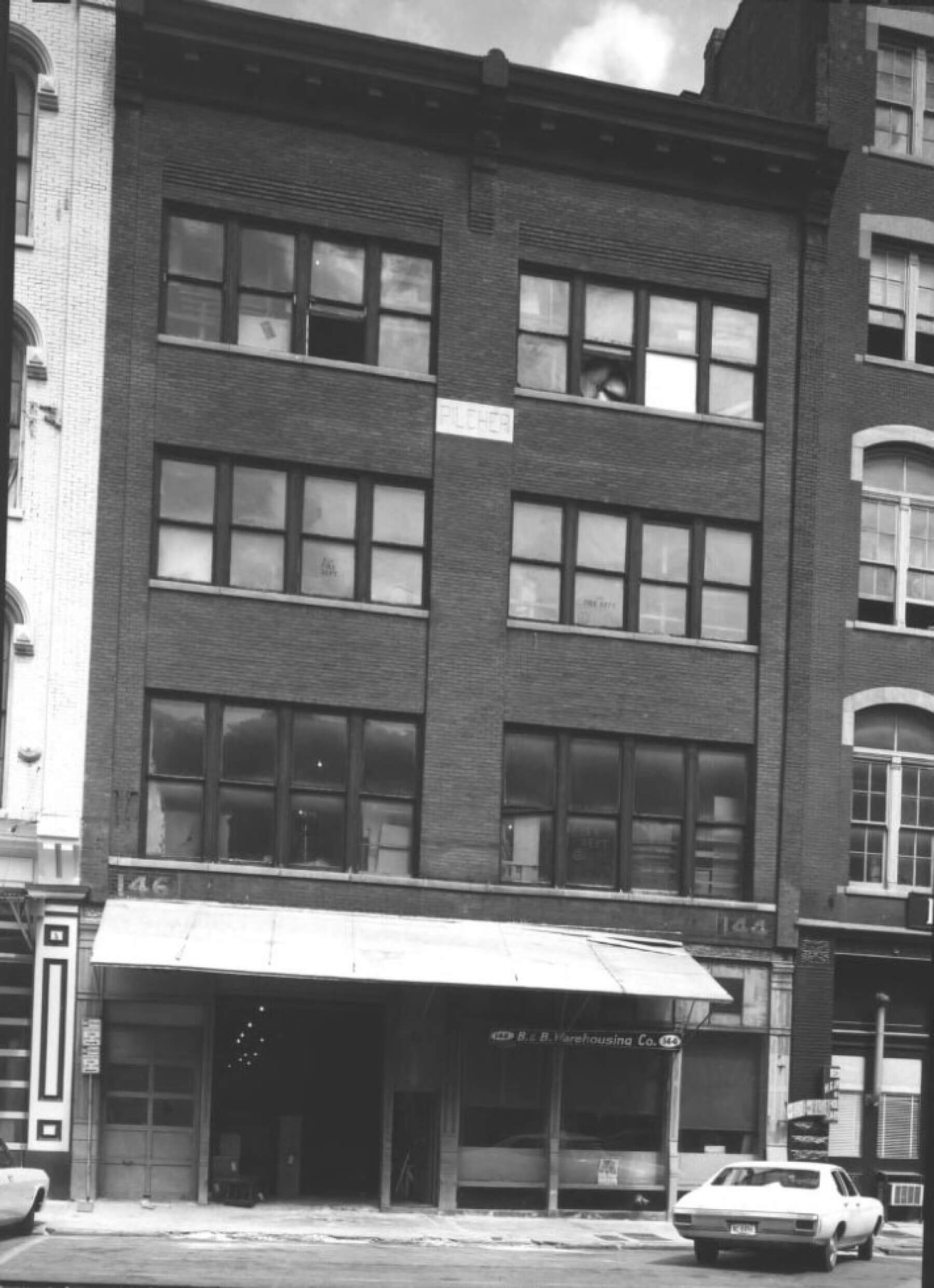Not Your Generic Airbnb
A one-of-a-kind adaptive reuse project, the renovation creates a forward-looking space that honors history while providing guests with an unforgettable getaway experience within the Cityside, Riverside and Penthouse luxury loft units and lobby totaling almost 8,000 square feet.
“We had been working with David Creed at Creed Investment Company on another project when he approached us with the idea of an Airbnb that would be unparalleled in this downtown area,” explains senior interior designer Michele McMinn. “We knew that embracing the building’s historic elements was absolutely critical for creating the vibe we were looking for and would separate our project from a generic Airbnb.
“We went through a very delicate process that was in line with the Historic Commission’s recommendations to keep all of the brick and the heavy timber structure, which created the envelope in which we could build our unique Airbnb experience.”
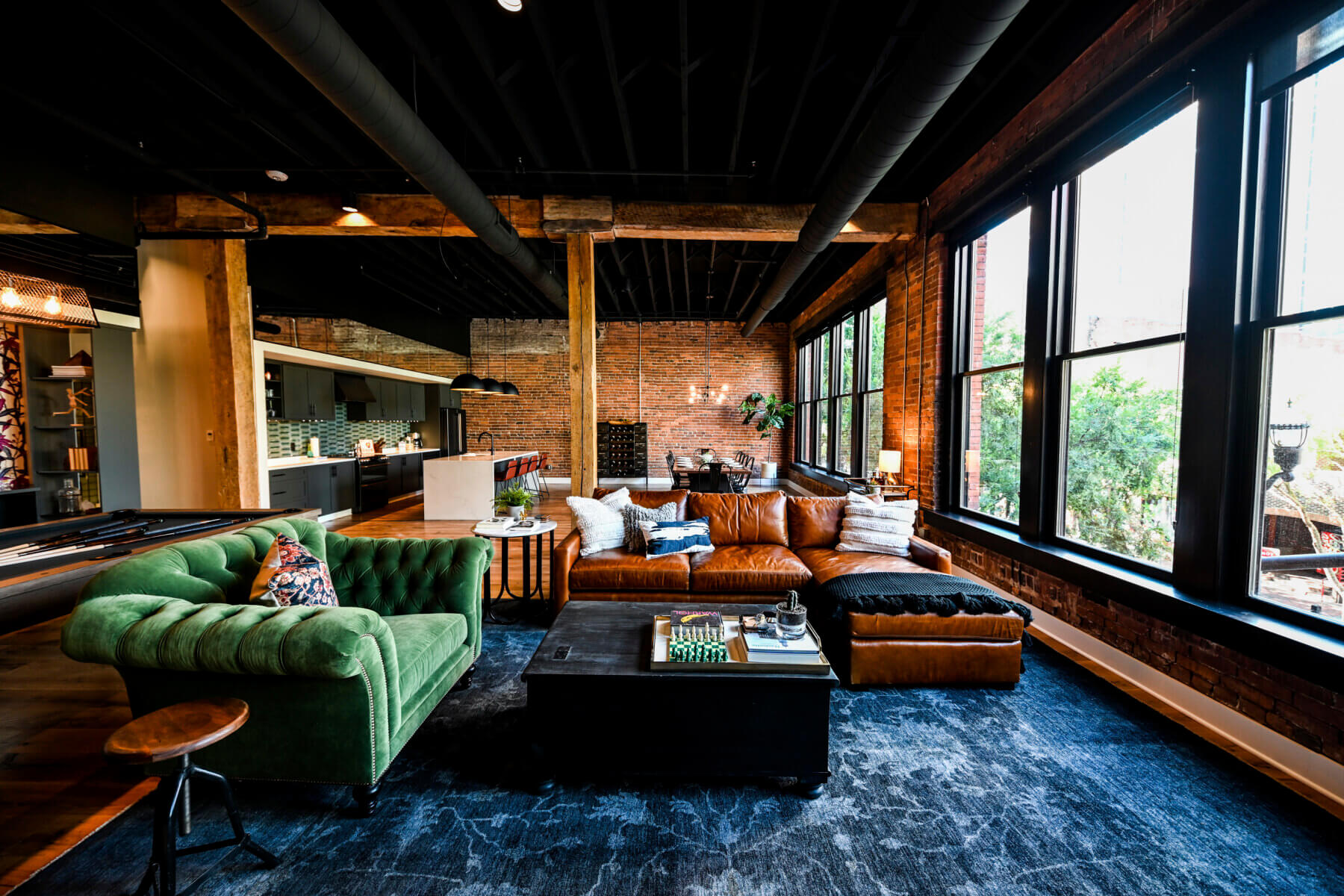
Putting the Pieces in the Right Place
We used contextual cues from the site to inform the layouts of the lofts. Understanding that significant noise would be generated from the streets below, we pulled the respite areas back toward the center of the building. Open entertaining areas were located at the ends of the building above the streets to maximize views and daylight. Bedrooms were placed toward the quiet center of the building so guests can get a good night’s rest.
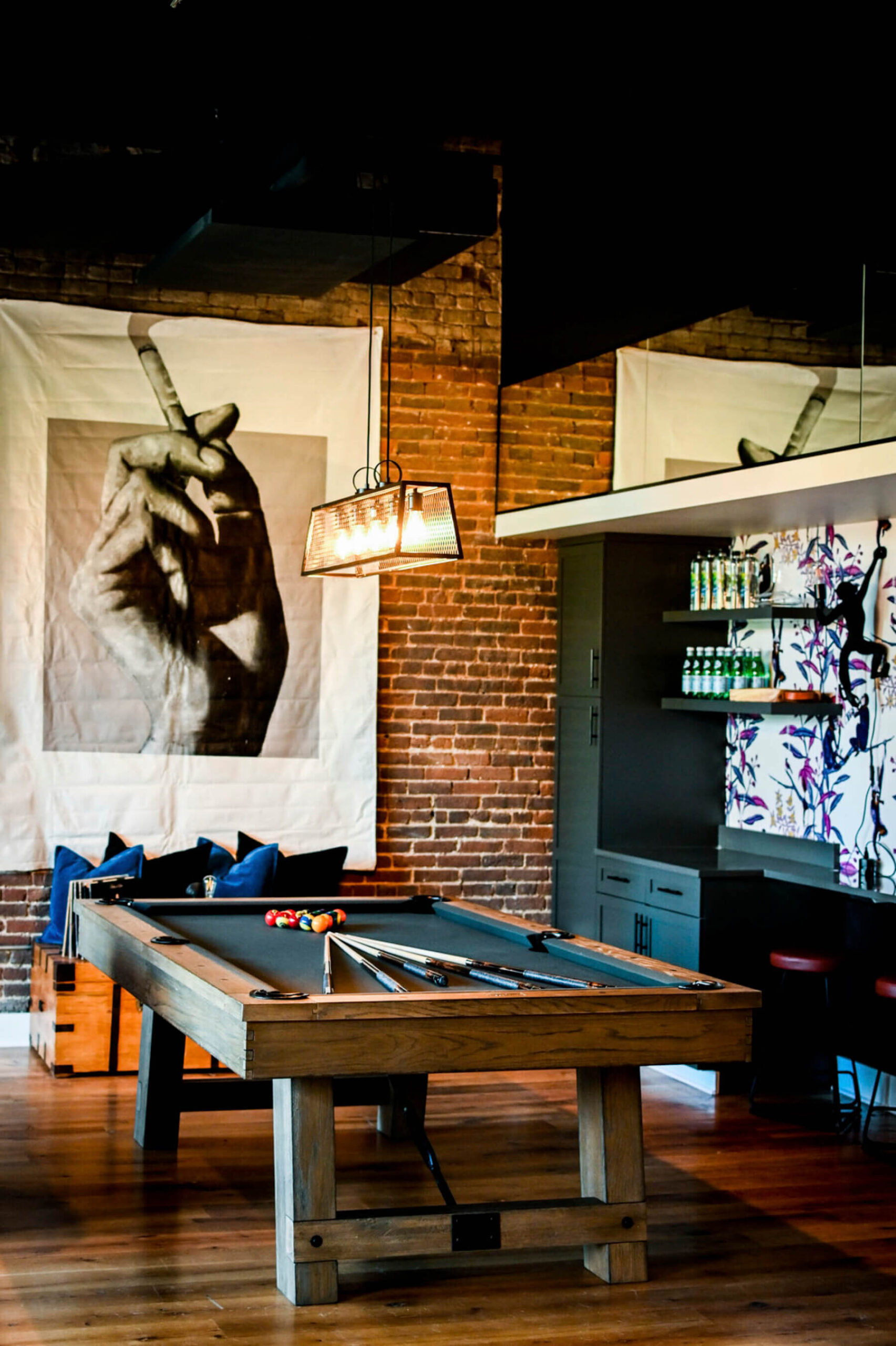
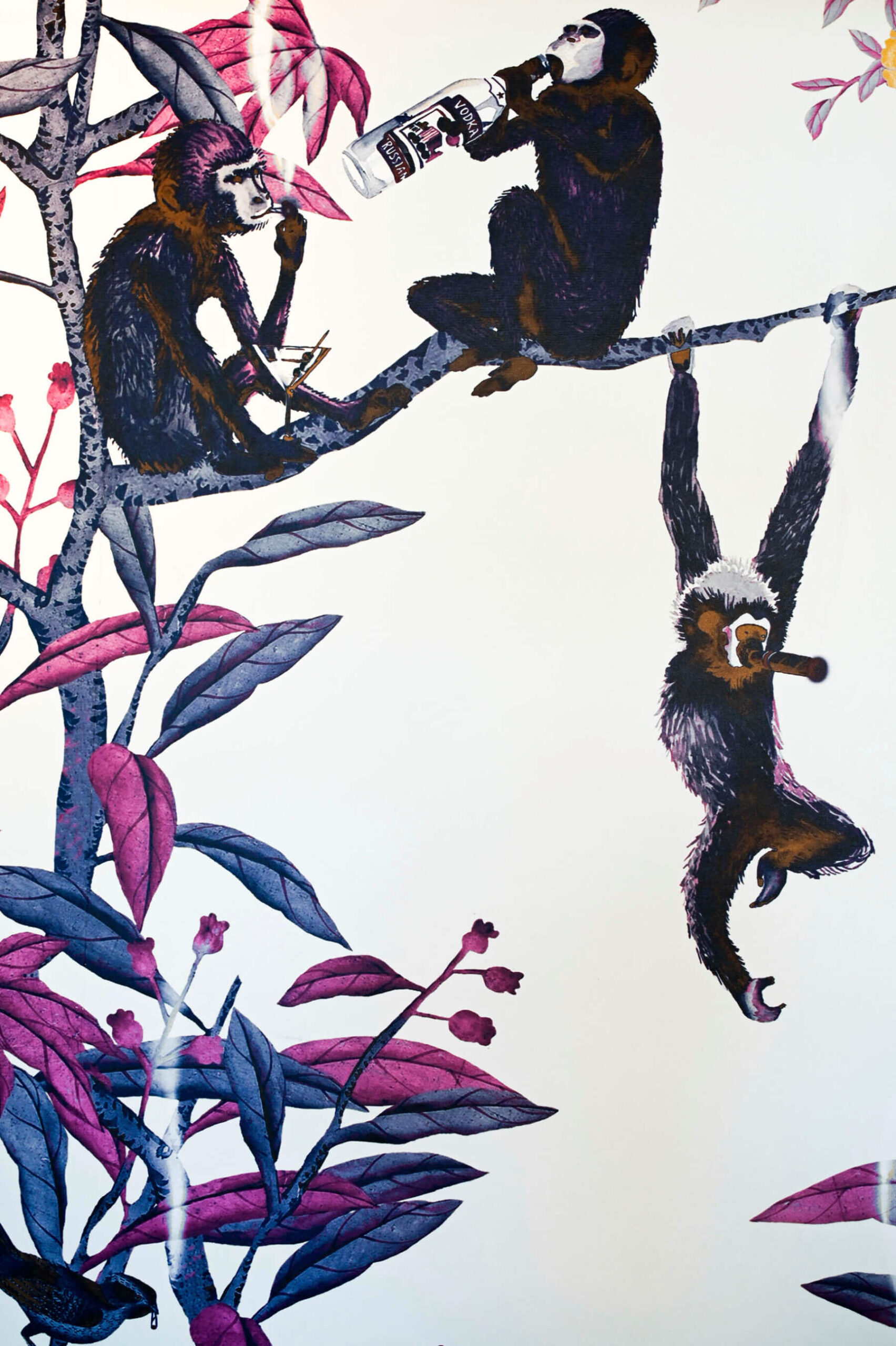
Quirky, Interesting, Unexpected
The loft units contain modern features such as LED lighting, upgraded mechanical systems, acoustical upgrades and responsible materiality like low VOC (volatile organic compounds). All of these choices equaled a more sustainable outcome while benefiting the building’s historic preservation, the user experience and the overall cost. We defined and designed “Instagrammable” moments while hiding novel eccentricities throughout the loft units so discovery became a unique part of the user experience.
“As you experience and live in this space, you’re going to find different details that can be quirky, interesting or unexpected,” says McMinn. “Oftentimes, there’s a fear of doing something that’s unexpected, but I think it actually promotes engagement within a space and provides a more memorable experience. Our client’s openness and trust was critical in the development of The Pilcher Lofts as it allowed us to be truly unique.”
Different By Design
Each unit features curated custom furnishings, a luxe kitchen and high-end bathrooms. The second-floor Riverside unit features a kitchen that showcases a more “refined” palette, which stands out against the “raw” base palette materials. The use of mirrors over the soffit serves to continue the view while bouncing daylight further into the space.
“The loft units all have their own identities, yet all are equal in terms of luxe accommodations and providing an amazing guest experience,” says McMinn. “Each unit offers the same amenities, but they all look different and perhaps most importantly feel different—and that was by design.
“We carefully selected refined, modern furnishings, many of which had historic nods. We worked with local makers to create custom pieces and brought in authentic antique elements, too.”
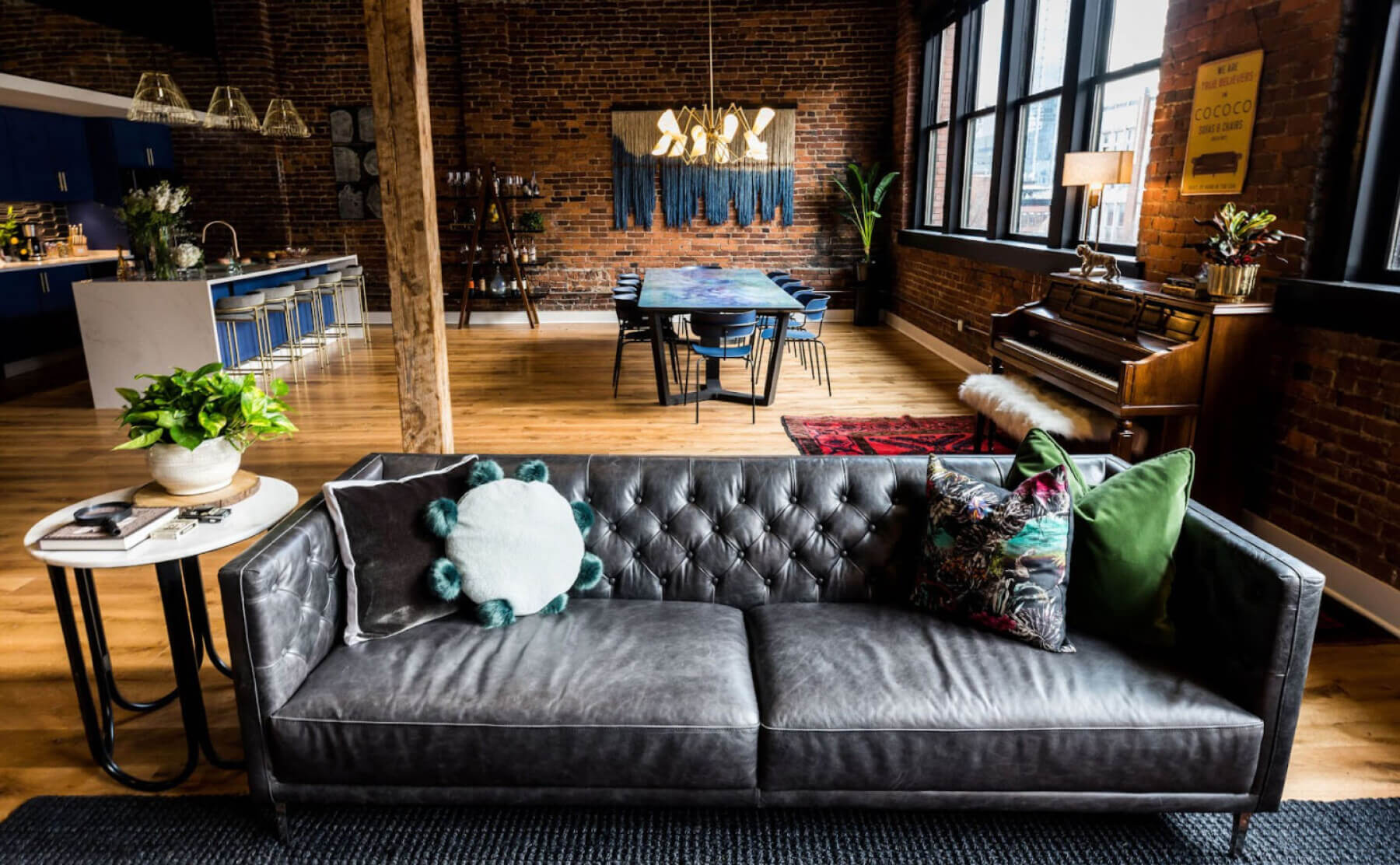
Not Just a Well-Appointed Environment
The 4,245-square-foot communal space in the fourth-floor Penthouse unit features towering 18-foot ceilings with oversized windows that offer stunning views of downtown Nashville. Celebrating local artisans and artists, all units feature custom-built furniture designed by Nashville artisan Jonathan Malphrus, while the Cityside unit and lobby feature commissioned artwork by Nashville-based artist Brian Wooden.
Keeping the Historic District’s Spirit Alive
Providing a memorable and distinctive destination where families or groups of friends are surrounded by the comforts of home, The Pilcher Lofts delivers a uniquely Nashville experience that embraces the past while paying homage to Music City. Since their construction, Nashville experienced a bombing on Second Avenue that directly affected The Pilcher Lofts as well as the overall feel of the neighborhood. The building has since been repaired, and Second Avenue continues to be a focus for its historical value and contribution to the vitality of the city.
